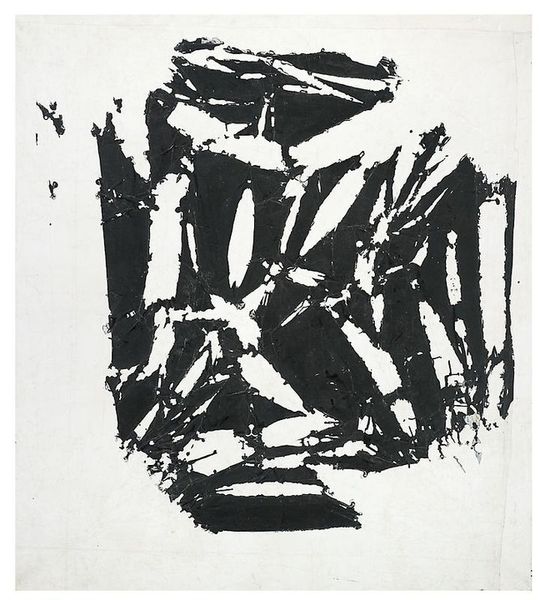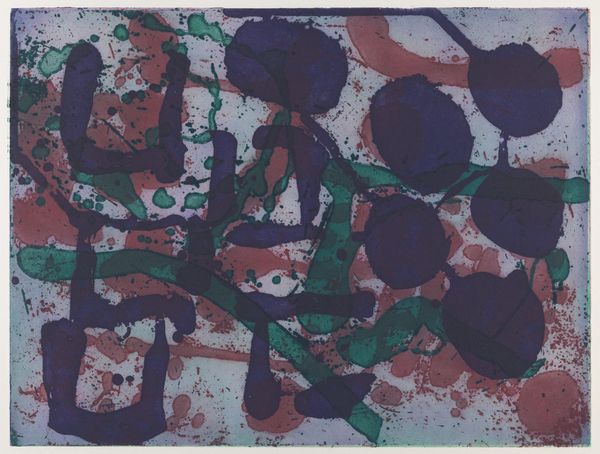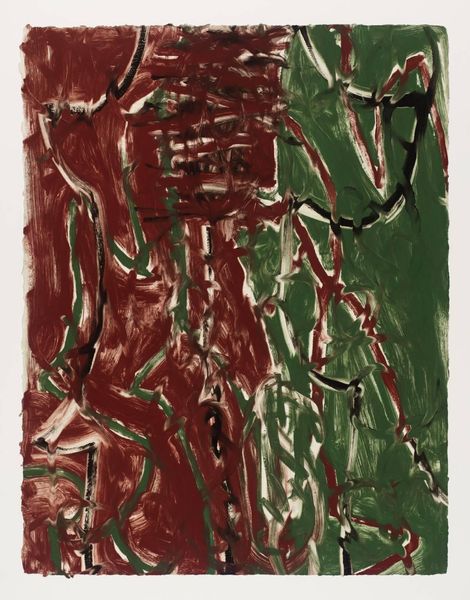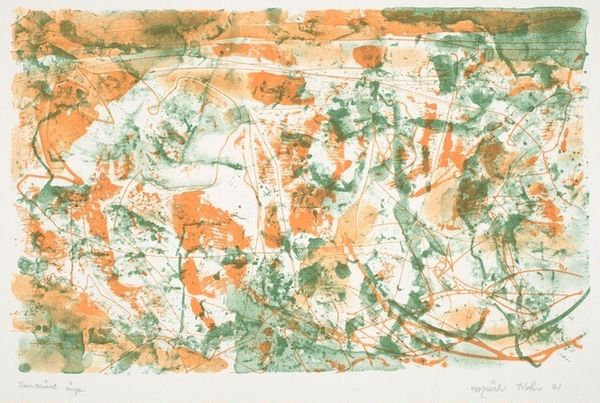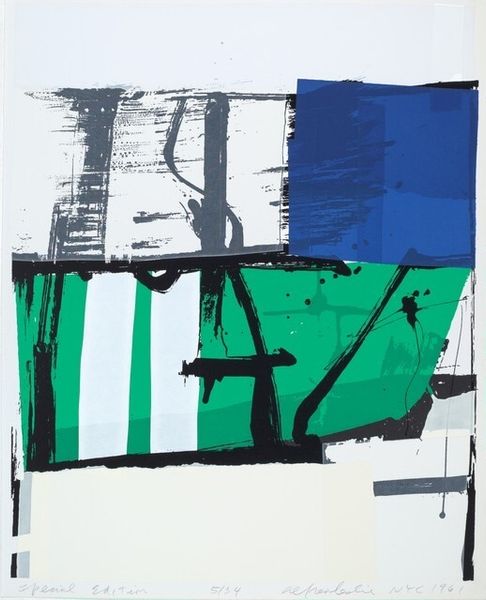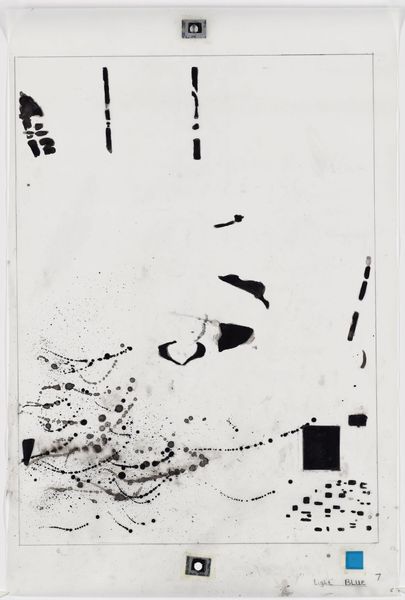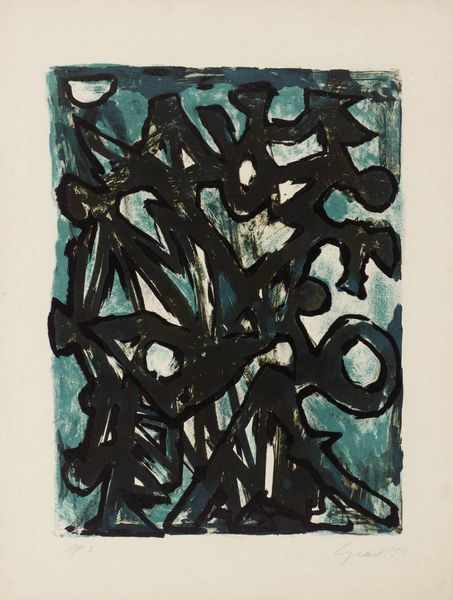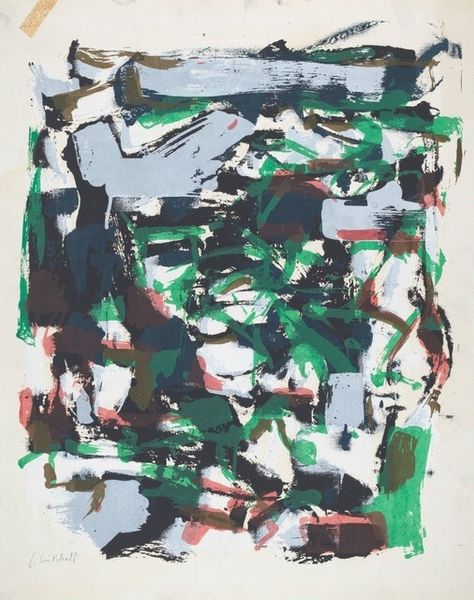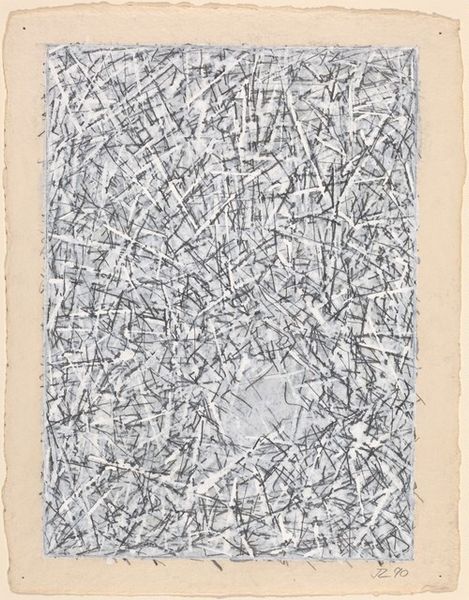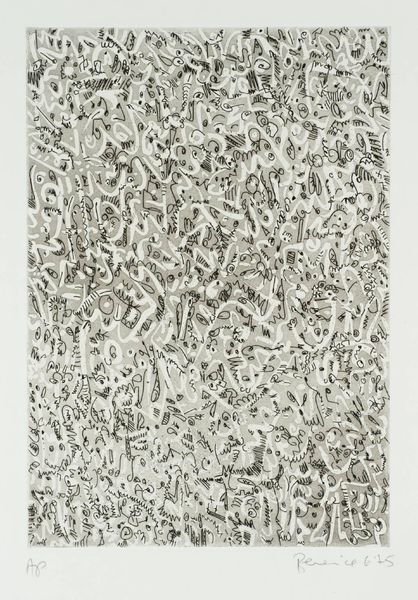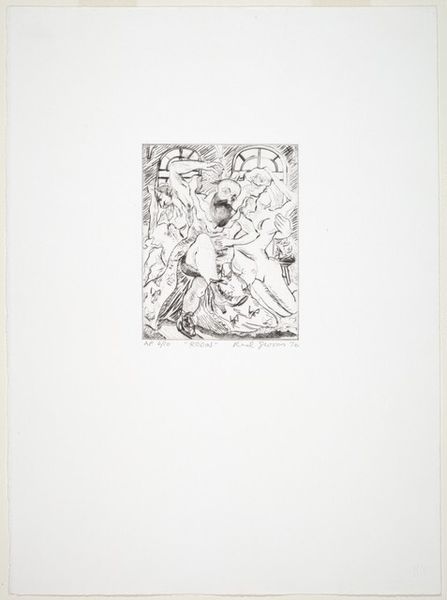
Copyright: Simon Hantai,Fair Use
Curator: Standing before us is Simon Hantai’s "Tabula," created in 1980, employing mixed media with collage and matter-painting techniques. Editor: Immediately, I am struck by how fragile yet assertive it feels. The almost aggressive application of paint contrasts so beautifully with what appears to be very delicate material. Curator: It’s part of Hantai’s "Tabulas" series, yes. The series exemplifies his "pliage" technique, where he folded and crumpled the canvas before painting. Once unfolded, the paint reveals the negative spaces. Editor: Pliage! The action of concealing and revealing seems deeply embedded in a struggle for form. It makes me think about identity politics: the hidden power dynamics and historical traces constantly reshaping our perception. The white spaces, for me, read as absences, erasures... Curator: Absolutely. And consider how, across cultures, the symbol of cloth or fabric has always held tremendous power. As something that covers, conceals, and even protects, but also as something which may be rent and torn as a sign of grief. The "Tabula" invokes ideas of revelation, perhaps in a destructive manner. Editor: Precisely! Destruction for revelation resonates so well with political acts of protest— tearing down existing structures, be they physical or societal. The raw texture introduces an important tactile element to an abstract painting. We need more of this physicality. Curator: And the color – that muted, almost military green – carries a specific symbolic weight, suggesting a groundedness but also perhaps constraint or oppression. This, combined with the textile element and its almost topographic features evokes themes of mapping or claiming a space. Editor: And mapping often leads to further questioning – mapping of bodies, histories, power. It becomes about how identities are situated within space, marked and claimed. It encourages thinking about contested spaces, personal and public. The painting feels inherently disruptive. Curator: Indeed. "Tabula," through its physical creation and its visual language, prompts contemplation on hidden realities and symbolic ruptures, resonating across cultural memory. Editor: It serves as a potent reminder of art's ability to unsettle established narratives and challenge how we engage with the world. It's far more than pretty—it’s demanding.
Comments
No comments
Be the first to comment and join the conversation on the ultimate creative platform.

